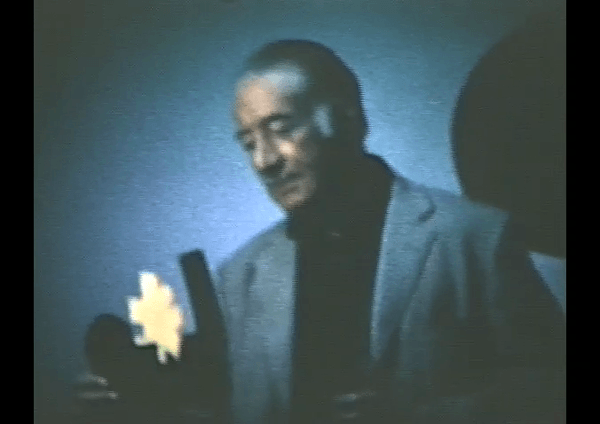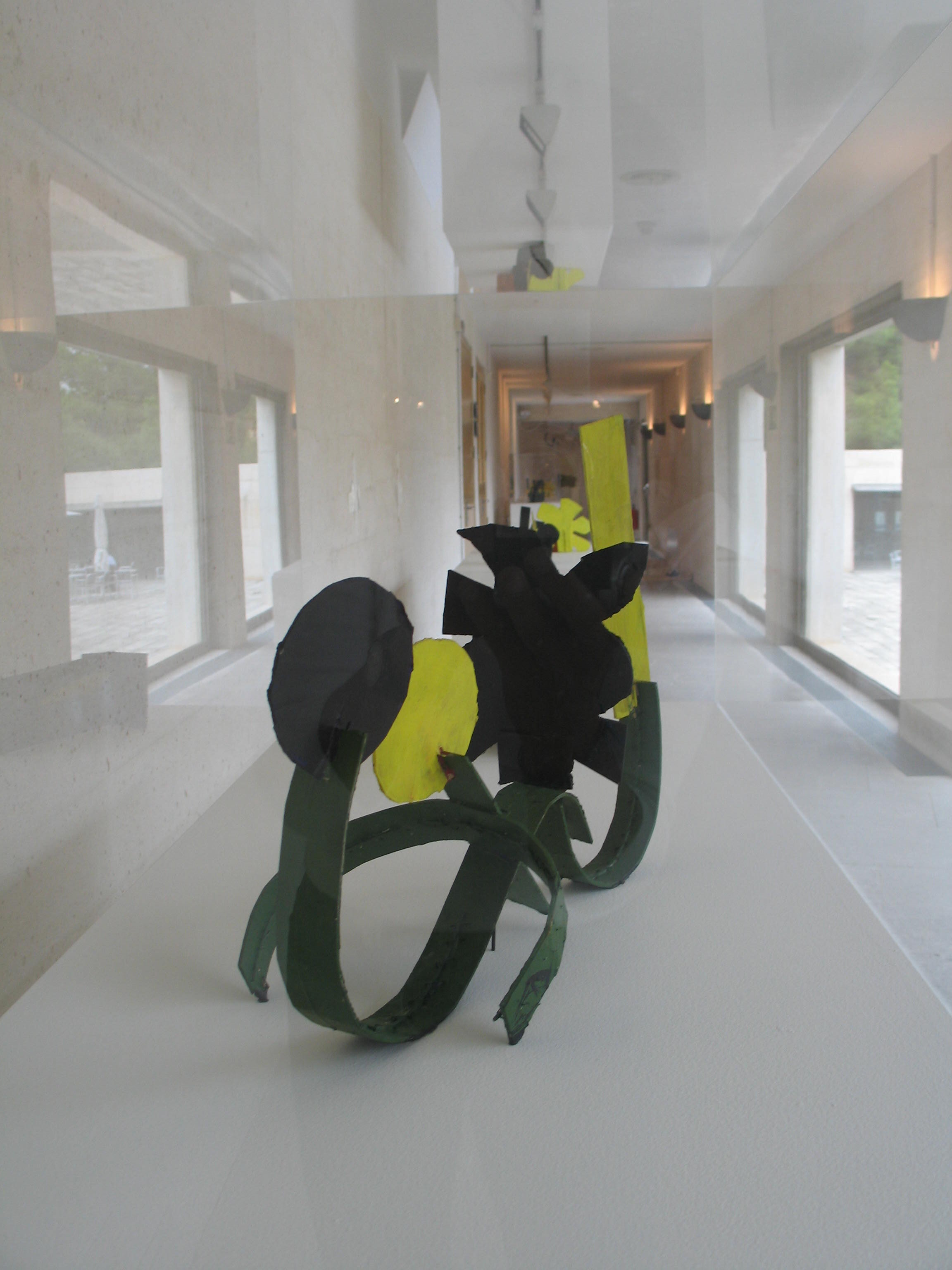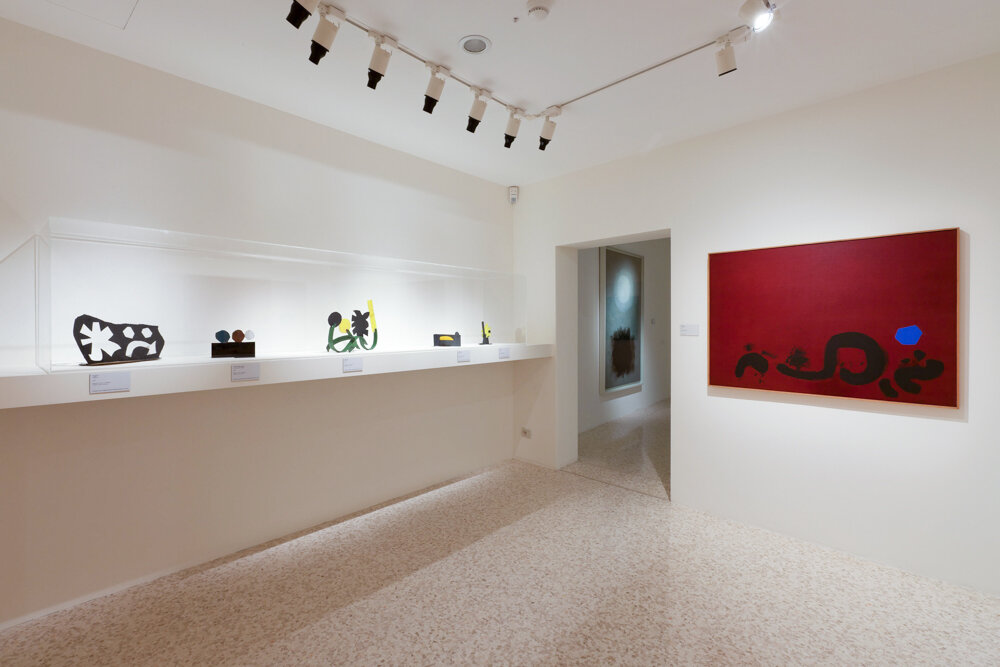"I enjoy doing sculpture of course, but the special bang I get is having the feeling that I am a young sculptor just beginning, which is a nice feeling for an old painter like me"
– Adolph Gottlieb, “Art Now: New York”, September 1969, vol1, Number 7
Above: Clip from the 1968 film of Adolph Gottlieb in his East Hampton studio, holding the maquette Petaloid. Film by Lee Hoffman.
Adolph Gottlieb’s venture into sculpture lasted only about a year and a half, from 1968 to 1970, but in that brief time he created a body of work that challenged the delineation between painting and sculpture. In 1969 he recalled how he got started:
"I first got going with these sculptures in East Hampton when “Tony” (Bernard) Rosenthal saw a mock up in cardboard of a small piece and offered to help me work it out in bronze … I liked the look of the bronze but thereafter used only steel or aluminum because I wanted the painted look and the particular colors I chose.
Left: Two Arcs, 1968, maquette; acrylic on cardboard, 8 5/8 x 14 x 9"
Negative, 1968, maquette; acrylic on cardboard, 7 1/4 x 17 3/4 x 4 3/4"
Gottlieb began with small, cut-and-painted cardboard maquettes; the first of these were made from the cardboards used by dry-cleaners to keep shirts folded. Others of this group are made from pieces of corrugated cardboard. These very small objects, taped, stapled, bent, painted and molded by hand, were early visualizations of work that Gottlieb conceived for large, outdoor sculptures.
Wall, 1968, maquette; acrylic on cardboard, 8 7/8 x 13 1/2 x 8 1/4"
Untitled (Three DIscs), 1968, maquette; acrylic on cardboard, 5 3/4 x 8 x 4 1/4"
Oval Slanted, 1968, maquette; acrylic on cardboard, 4 3/4 x 8 x 5"
Arabesque, 1968, maquette: acrylic on cardboard, 13 1/8 x 17 1/2 x 6 1/4"
Like his friend, sculptor David Smith, Gottlieb’s background as a painter made it impossible for him to visualize objects without color. Or it may be, as some have observed of his sculptures, that he had to visualize color as physically real. All the fine points of his years of painting – touch, visual balance, surface quality, and more – are present in these small sculptures. As is the larger concept that drove Gottlieb’s art:
"I'm inclined to think that this is one of the points of the kind of painting I'm involved in – that the very nature of abstraction, the very nature of abstract thought is to reduce the complexity of all of life and to bring it down to something very simple which embodies all this complexity."
The Gottlieb Foundation is pleased to have included these maquettes in more recent exhibitions.
Installation photo of “Adolph Gottlieb: Small Images Spanning Four Decades 1938-1973” at Manny Silverman Gallery, Los Angeles, April 1995.
Painting: Looming #2 (1969), Maquettes: Petaloid (top) and Oval Slanted (bottom) (both 1968).
Installation photo of “Adolph Gottlieb: Sculptor” at Fundació Pilar I Joan Miró,
Palma, September 2006. Maquette: Arabesque (1968)
Installation photo of “Adolph Gottlieb: A Retrospective” at the Peggy Guggenheim Collection, Venice, September 2010.
Maquettes (left to right): Negative, Untitled (Three Discs), Arabesque, Oval Slanted, Petaloid (all 1968),
Paintings (left to right): Mist (1961), and Indian Red (1972).
Installation photo of “Adolph Gottlieb: Sculptor” at the Akron Art Museum, October 2012.
Paintings (left to right): Three Elements (1964), Three Discs on Chrome Ground (1969)
Sculptures (left to right): Two Arcs, Two Arcs (maquette) (both 1968), Petaloid with Curved Arrow (maquette), and Petaloid with Curved Arrow (both 1968).
All artworks ©Adolph and Esther Gottlieb Foundation/Licensed by ARS, NY, NY
To see more works by Adolph Gottlieb, click here.





